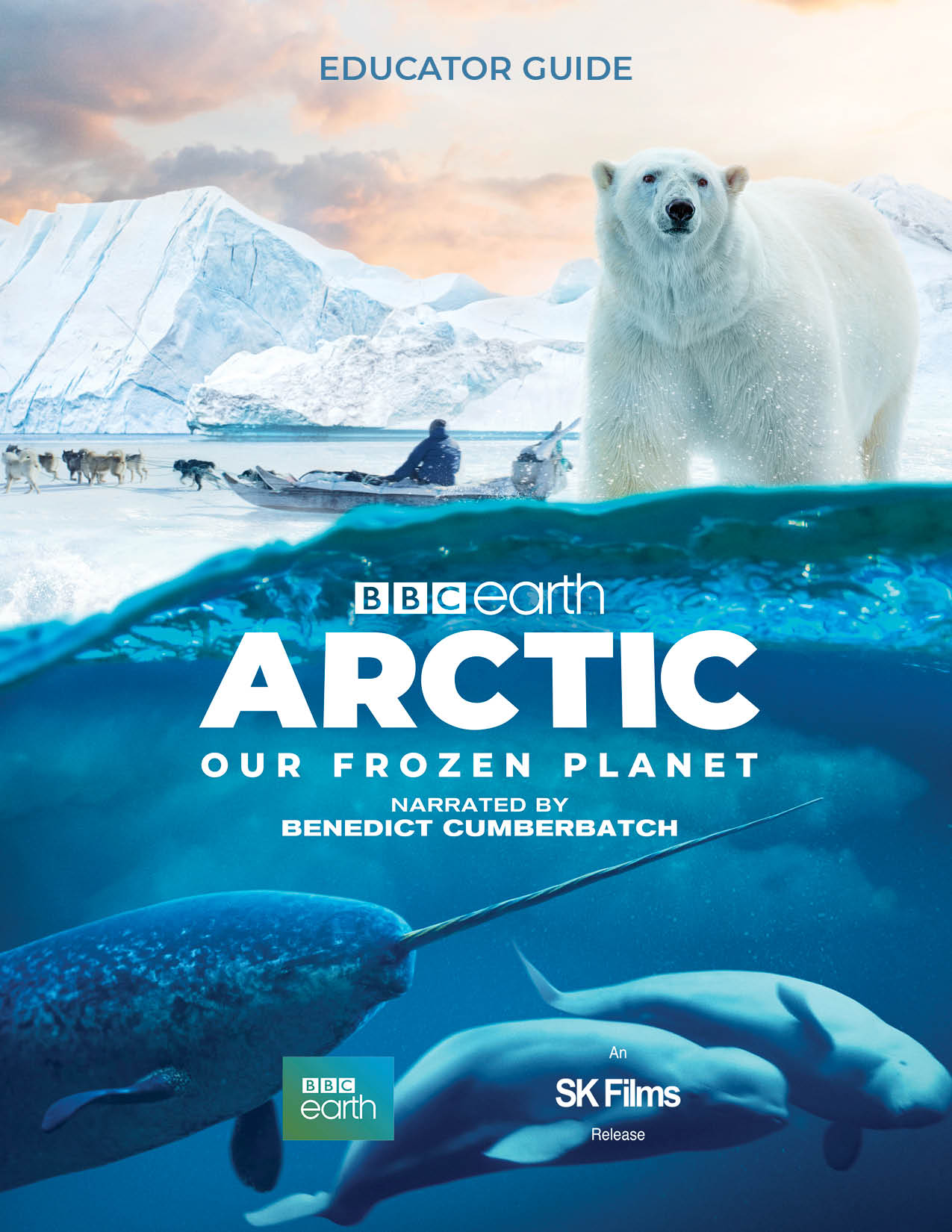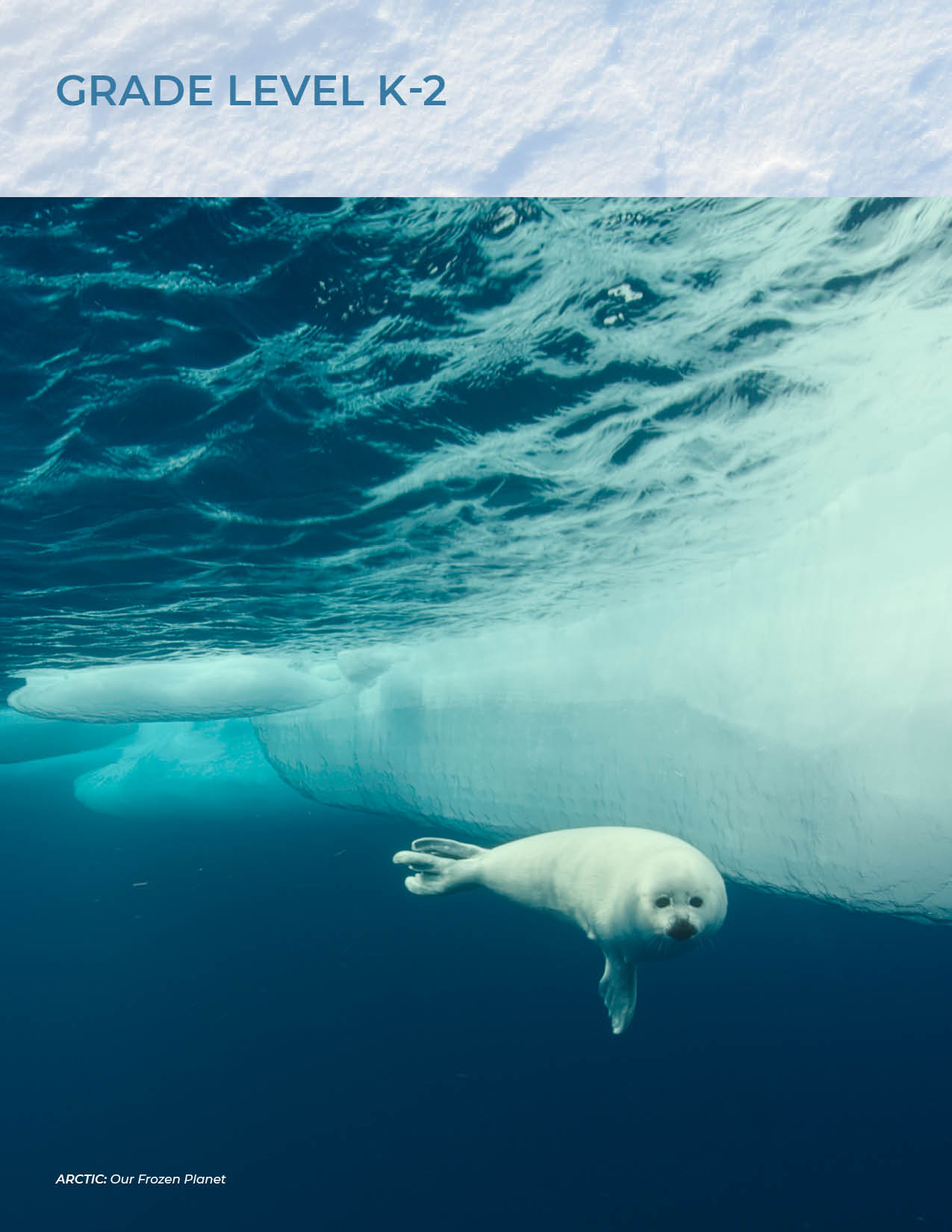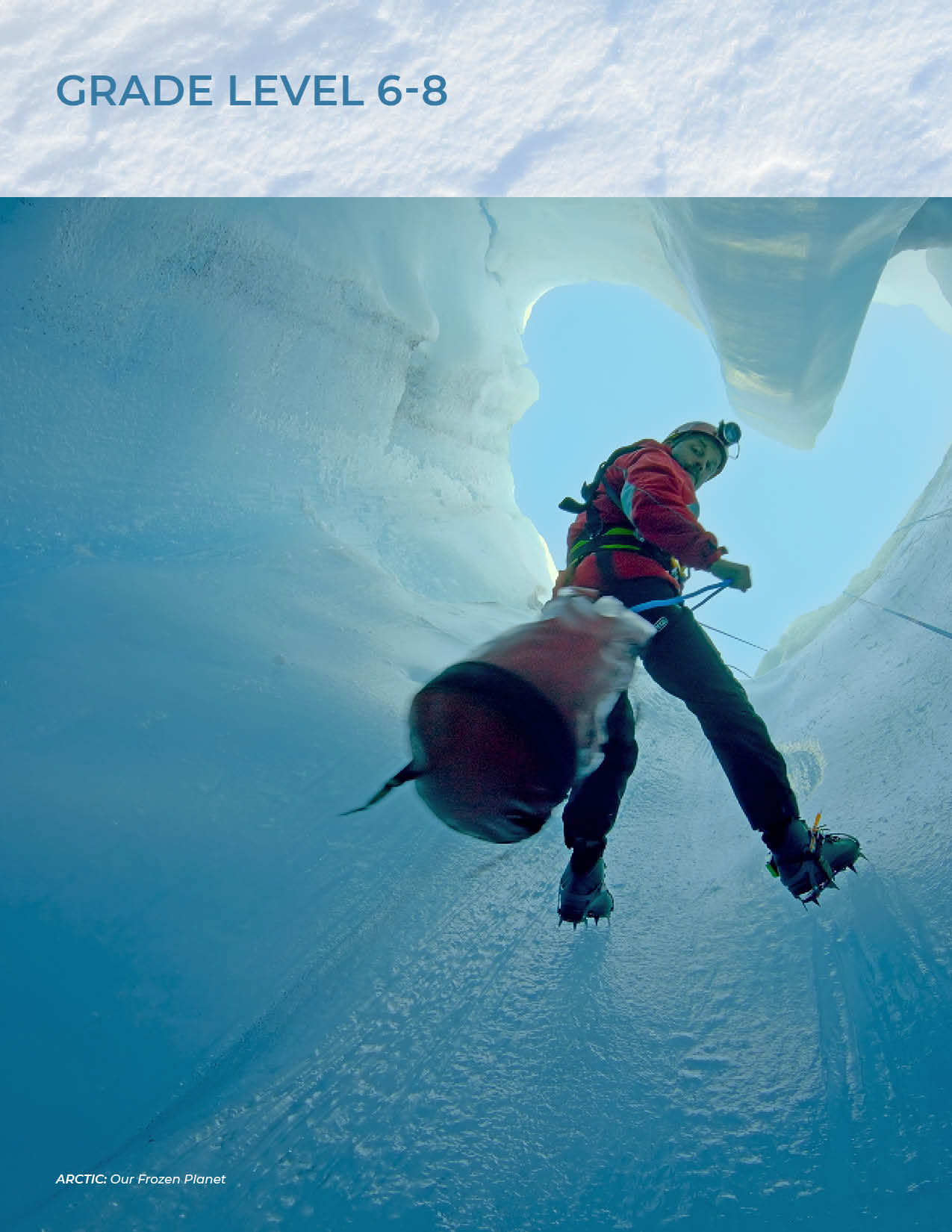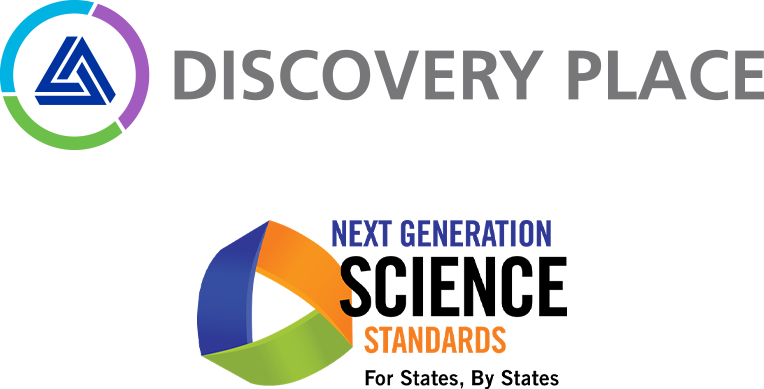


For millennia, life has flourished in the Arctic thanks to a steady cycle of freeze and thaw. Spanning three continents and eight countries, the Arctic is home to the most diverse eco-system on earth. The Arctic: Our Frozen Planet Educator Guide supports the Next Generation Science Standards. It was created by Discovery Place Education Studio, North Carolina, together with SK Films and can be used to accompany the IMAX/Giant Screen film Arctic: Our Frozen Planet or as a stand-alone education tool.



Students will see animals in the film ARCTIC: Our Frozen Planet that may be similar to familiar wildlife they learn about every day but have different adaptations that allow them to survive in the Arctic.
As portrayed in ARCTIC: Our Frozen Planet, Inuit are a group of culturally similar indigenous peoples inhabiting the Arctic and subarctic regions of Greenland, Siberia, Canada, and Alaska (United States).
In the film, ARCTIC: Our Frozen Planet, we learn about the critical role of water, in liquid and frozen forms, for humans and animals alike. Water provides everything from a frozen surface on which to travel for the Inuit to a place to live for narwhals and seals.
In ARCTIC: Our Frozen Planet, we see how ice at the poles is dramatically decreasing, putting sea life and indigenous populations at risk of losing their habitat and livelihood.
The film ARCTIC: Our Frozen Planet introduces students to some of the unique species that live in the Arctic and the threats to their habitat and ways of life.
ARCTIC: Our Frozen Planet, highlights the work of global climate scientists, in partnership with the Inuit, as they try to understand how the global climate is changing and how that will affect every single one of us. Climate scientists and meteorologists conduct observations, collect data, and perform experiments to isolate the causes and effects of the changing planet.
